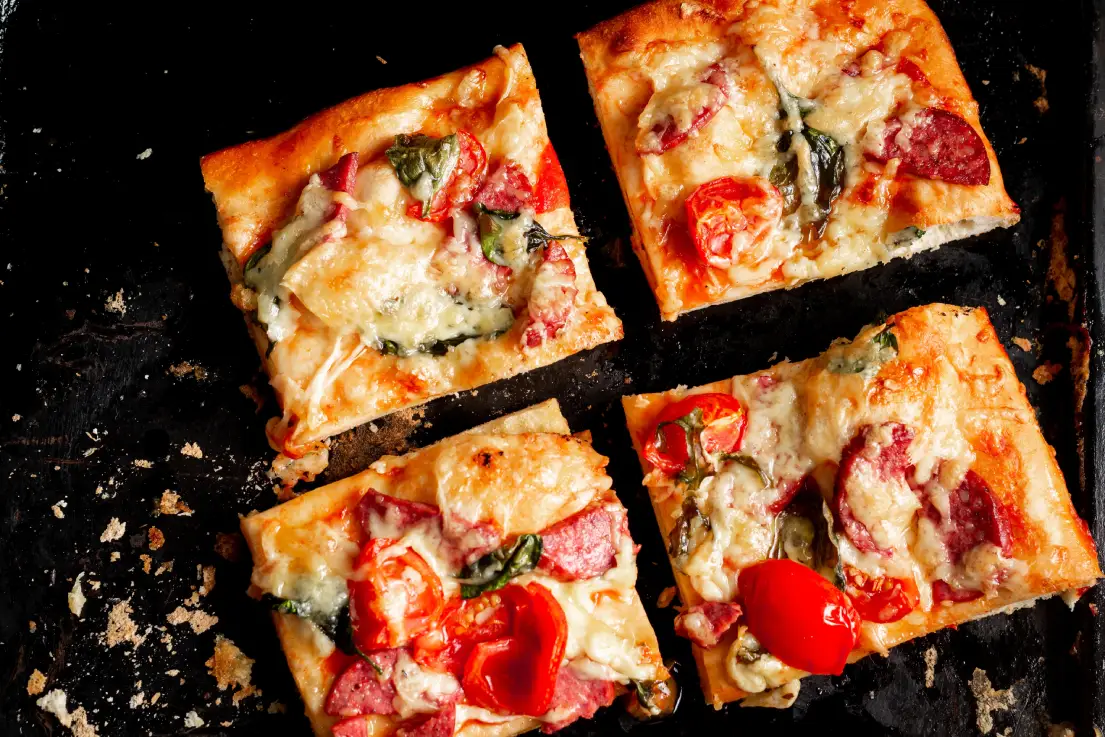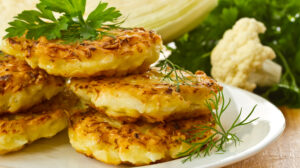How to Make Authentic Tuscan Pizza: A Pizza Making Class in Tuscany
Disclosure: This page contains affiliate links. If you make a purchase through these links, I may earn a small commission to help me support my blog.📝
My Pizza-Making Class Adventure
Pizza is one of the iconic dishes in Italian cuisine, and learning how to make it is one of the greatest joys I could imagine. My goal was to learn this art form in the very land that invented pizza—Italy, and more specifically, Tuscany. Why not combine a great trip to Tuscany with mastering the art of pizza-making? After years of trying my luck with homemade pizzas, but never being successful enough, I decided to join a pizza-making course in Tuscany and learn from the experts, while enjoying the beautiful scenery. So I booked online, eager to get started!
Attracted by the fragrant aromas of fresh herbs, I prepared to explore the world of pizza with Marco.
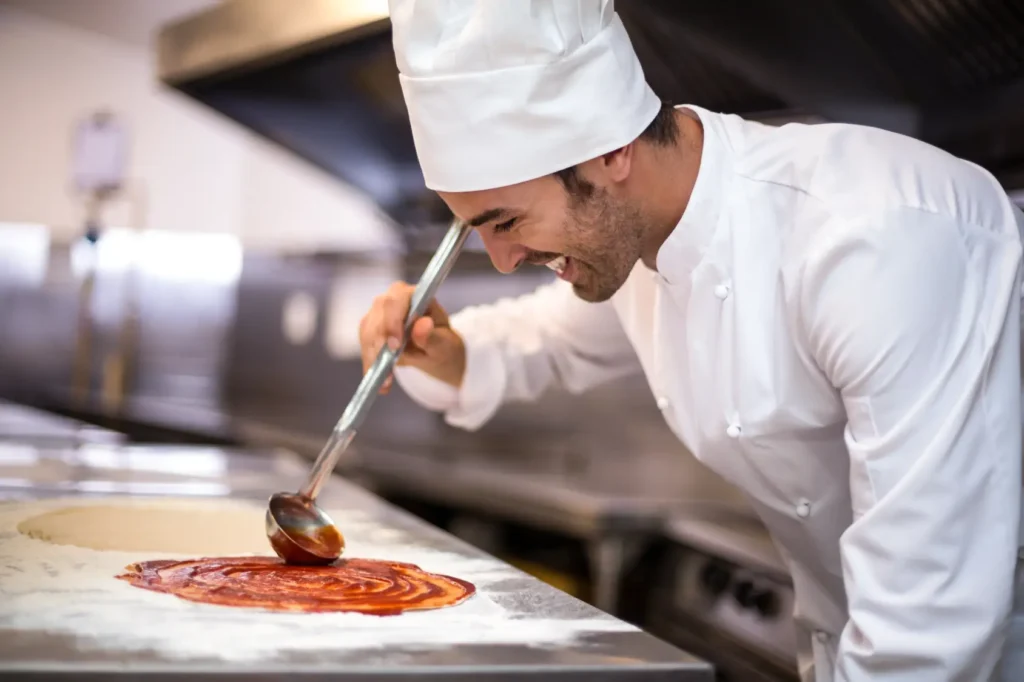
When I entered his pizza-making haven, his enthusiasm was infectious. With over two decades of pizza wizardry under his belt, he promised me an education on dough, sauce, and toppings. In particular, he taught me how flour is the core element in producing good dough, which, in turn, will produce a tasty pizza.
Decoding Flour for Perfect Pizza
Flour is one of the magical ingredients that transforms a powdery substance into a pizza masterpiece. But not all flours are created equal. Let’s take a look at Italian flour varieties, specifically those best suited for pizza perfection. And because we love a good showdown, we’ll compare them to their American counterparts. So, grab your apron, wash your hands, and let’s knead some knowledge!
1. Italian Flour: Protein Content and Gluten Strength
Italian flour is extracted from hard wheat varieties. It produces a high protein content, yielding a stronger gluten, making it ideal for bread, pasta, and pizza.
Flour found in Italian supermarkets is often labeled with a W index. “W” indicates the strength of flour, that is the ability to absorb liquids in the dough and retain gas during leavening. You might be asking, what do you mean by “gas?” You mean “air!” When I say “gas”, I mean carbon dioxide created from yeast. This gas gets trapped within the gluten networks of the dough during the leavening process, which, in turn, will cause it to rise. Air can also play a part during the mixing/kneading process, but it does not cause the dough to rise.
The higher W values show better dough support and resilience during long fermentation.

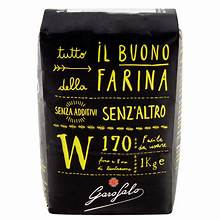
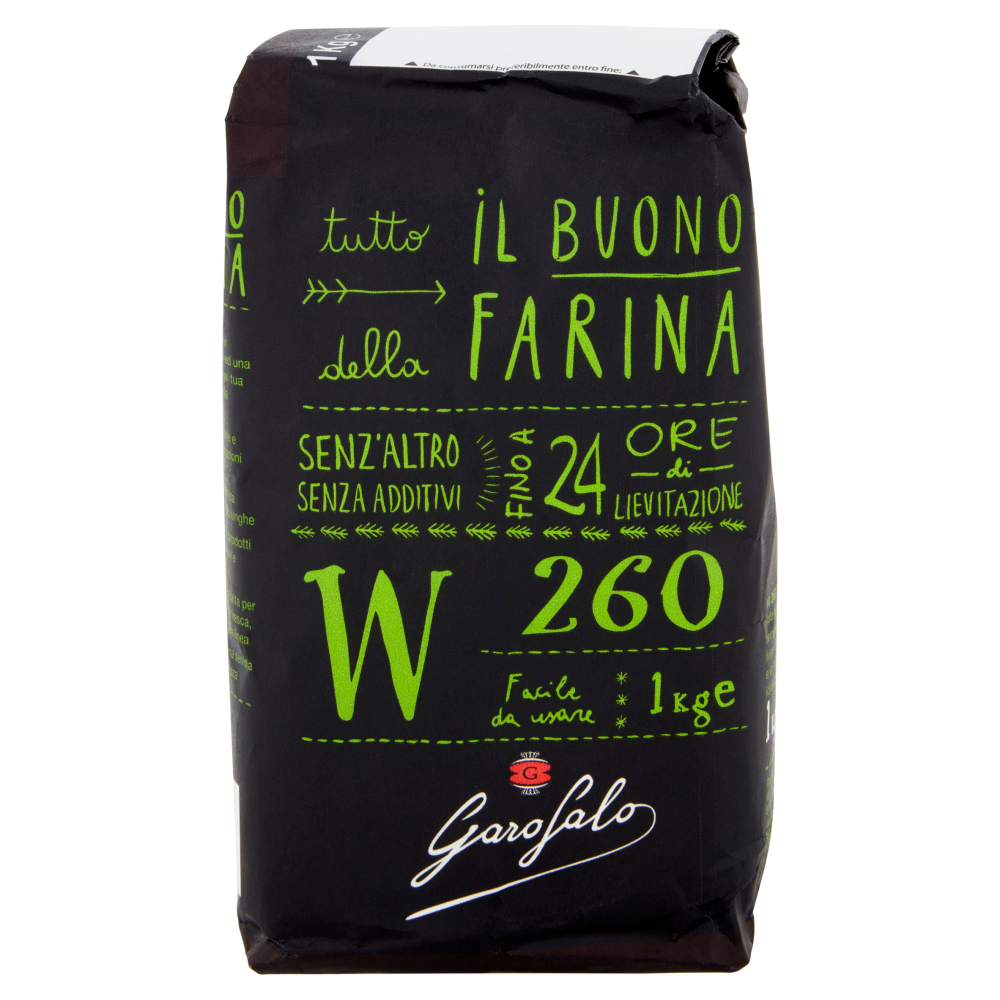

For pizza, W260 or 00 are ideal. Amazon sells Caputo 00 flour in bulk (10 2.2 lbs. bags for $37). If you buy the 2-pack one, you’ll pay more $14 or $7 each. With the bulk one it’s almost half price! As you can see, buying bulk is the ideal solution if you plan on making pizza on a regular basis.
Bakers in the old days used an easy and effective method for determining the strength of flour: They would take a handful of flour, clench it tightly in their fist, release their grip, and observe whether any compactness remained when opening their fist. If compact, this was considered strong flour with strong gluten development properties, perfect for bread and yeast-leavened products; otherwise, it was classified as a medium-strength category, useful in pizza dough production. However, when the entire handful fell loose when opening their fist, it was classified as weak lacking sufficient strength necessary for good rise/structure production.
2. Milling Technique
Italian flour is traditionally milled using stone mills, producing a coarser texture and a distinct rustic flavor profile to all baked goods.
3. Wheat Type
Wheat Type “00” Flour: Italy’s beloved “00” flour comes from hard wheat grown in the country, especially from southern regions where the climate is ideal for wheat growth. It’s the go-to choice for pizza and pasta.
American Flour: Versatility and Adaptability
American All-Purpose Flour: Milled from soft wheat, American all-purpose flour has a lower protein content. This makes it suitable for many different recipes ranging from cookies to pancakes; its fine texture ensures tender baked goods. American flour is milled using modern roller mills, creating consistent and neutral taste profiles in its final product.
Choosing Your Flour Wisely
- Baking Bread: opt for Italian strong flour if you’re after chewy, artisanal loaves.
- Cookies and Cakes: American all-purpose flour shines here, providing tenderness without compromising structure.
Secrets of Pizza-Making: Four Basic Ingredients
Marco explained that there are 4 basic ingredients in an Italian pizza: flour, water, yeast, and salt. No sugar, no honey, no oil. Surprised? I bet you are.
The ingredients we used for the dough:
- 1.65 kg medium-strength flour (either 00 or 0 or W280)
- 1 liter of water
- 50 gr salt
- 2 g fresh yeast
Pour all the flour into a food processor with a dough hook. Crumble the yeast with your hands into the flour. Add the water (the first half all at once, the rest in 2 or 3 parts). Leave a little bit of water to melt the salt in it. Add to dough and let the machine do its job for a total of 15 minutes. The final result will be an incredibly soft and elastic dough.
Rising: One of the secrets of making a delicious pizza is to let the dough rise properly. Make 300 g dough balls from the main batch and let them rise at room temperature for 12 hours.
Shaping: The final step in pizza creation is to form the pizza pie. Press each ball with your fingers around the edges to create the rim. Do not stretch the dough. Measure 1 inch from the edge of the dough, and press all around to create the rim. You will notice that the center of the circle will now have a bit of a dome effect. To flatten and expand the circle, now use the famous slap and fold method you can find on many Youtube channels.
Be careful not to deflate the dough too much.
As our time was short, we used Marco’s dough from earlier to save time.
Pizza Sauce
The sauce, our next endeavor, required simplicity and freshness, according to Marco. We chopped tomatoes, garlic, and basil, orchestrating a symphony of flavors. As the pot simmered, Marco insisted it needed at least 15 minutes to reach the perfect thickness and richness.
The Ideal Cheese for Pizza
Picking the right type of cheese is crucial for the perfect pizza. The way it melts, and tastes to the palate, blending harmoniously with the other ingredients is key to success. Marco explained he only used fresh local soft cheese made from cow’s or buffalo’s milk. You may be wondering what’s the difference between regular and buffalo mozzarella.
Fior di Latte vs Buffalo Mozzarella
Different varieties of mozzarella vary greatly in terms of milk type used, water content and fat percentage, as well as flavor and texture.
Buffalo mozzarella is a fresh cheese made with buffalo milk with an intense and complex flavor, firm and dense texture, and a bright yellow hue. Thanks to low water content, and higher fat and protein content, buffalo mozzarella melts less and produces an additional blistered-burnt effect when used on pizzas. As a certified protected product in Italy, buffalo mozzarella tends to be more costly and harder to find than its cow’s milk counterpart.
Fiordilatte, on the other hand, is a fresh spun paste cheese made of cow’s milk with an exquisite milky flavor, soft texture, white opaque hue, and high water content compared to fat or calories. Its melting characteristics create a stringy and uniform effect across pizza slices.
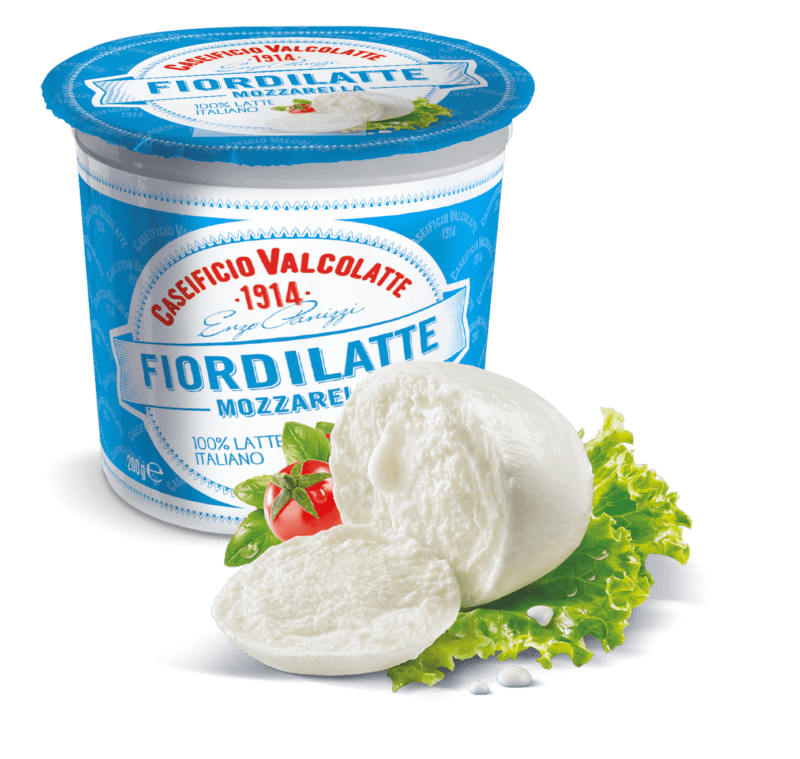
Decisions between buffalo mozzarella and fiordilatte depend on the desired results of pizzas you want to create, with buffalo mozzarella being best for thick-crunchier crust pizzas, while fiordilatte is perfect for thin and crispy ones. Both should be used sparingly so as not to overload or overly moisten the dough layers.
Toppings
Then came the toppings—a playground of creativity! Cheese, ham, mushrooms, olives, artichokes—the canvas was mine. As I designed my culinary masterpiece, Marco reminded me that pizza making was not just a process, it was an art form.
Baking Pizza
Marco explained that the type of oven is another key aspect to achieving a perfect pizza, and it can make a huge difference in the final result. The oven determines how the pizza bakes, how the crust forms, how the cheese melts, and how the flavors blend.
Four Types of Oven
There are various oven types that you can use to create pizza, such as electric, gas, convection and wood-fired ovens. Each oven type has its own set of advantages and disadvantages that may impact how the pizza turns out. The ideal type is one capable of reaching very high temperatures while evenly dispensing heat throughout its interior space.
Marco used a wood-fired oven that has been passed down through generations as his perfect temperature range for pizza making: between 450C and 500C, which correspond to approximately 840F to 930F. At this temperature, you can produce pizza with a crispy outer layer, while remaining soft and airy on the inside. Approximately 90 seconds is all it took at this temperature to cook the dough and toppings, as well as create that distinctive charred and smoke flavor. Marco used a wood-fired oven that had been in his family for generations.
When the moment of truth arrived, Marco presented the masterpiece. Cutting it into slices, he declared that pizza was not just a dish—it was a culture, a way of life. As we sat down to savor the creation, accompanied by a glass of wine, Marco shared a salad and dessert, turning our pizza session into a feast.
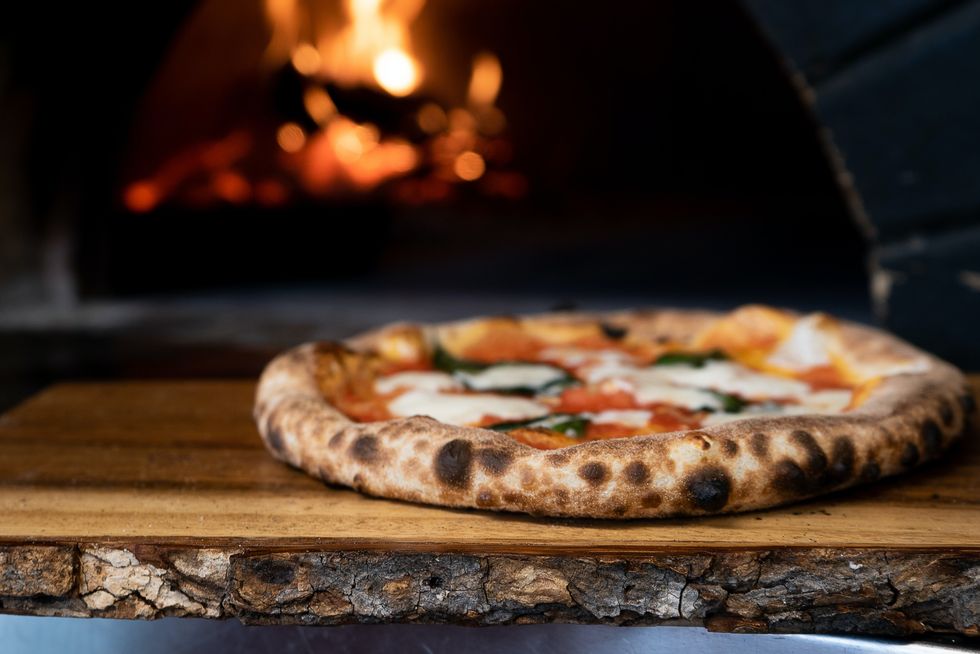
The first bite was an awakening—an explosion of textures and flavors! My pride soared as I realized I was responsible for this culinary masterpiece. Marco graciously extended an invitation for me to return any time. Hopefully, I will be able to repeat these great results once back home!
My pizza-making class became one of the highlights of my trip, offering more than just a pizza-making lesson; it provided insight into Tuscan culture, friendship with Marco (did I say he was HANDSOME??), and an experience I will always treasure. Now armed with the knowledge gained during this class, I eagerly anticipate recreating its magic back at home so I can share its fabulous flavor with family and friends!
Are you looking for an authentic way to experience Tuscan lifestyle? Why not join a pizza-making class and discover its secrets? There are various pizza-making classes in Tuscany to meet any preference, budget, and schedule—from cozy family kitchens to professional cooking schools. Here are some of the top pizza classes you can book online:
- Enjoy Chianti’s Countryside Vibe and Create Your Own Pizza and Gelato: Join this class in a picturesque Tuscan estate, where you’ll learn how to craft pizza and gelato from scratch, using fresh organic ingredients. Paired with some fine wine, your own delectable creations await! This class makes an ideal romantic and relaxing evening getaway in the countryside. Perfect for couples, families, and groups.
- Fresh Pasta and Pizza Making Class in San Casciano de Bagni: This class will teach you to craft various forms of pizza and pasta such as focaccia, tagliatelle, and ravioli, plus make classic tiramisu and limoncello lemon liqueur. At the end of class, you will enjoy a five-course dinner featuring your creations along with local wine—the ideal experience for foodies who wish to discover Tuscan cuisine’s diversity and richness!
- Learn How to Prepare a Traditional Italian Pizza with a Professional Chef: This class will bring you to a private estate on Florence’s hills where a professional chef will teach you how to make pizza. Here, you will discover different methods and techniques of pizza-making depending on region or style; then customize your own creation with toppings of choice! This experience is ideal for anyone wanting a memorable learning experience combined with scenic views over Florence.
- Be Part of the Culture with this Family Cooking Class: This class will welcome you into a warm and friendly kitchen, where you will learn to make pizza and gelato from a local family, while learning its history and culture! At the end of class, enjoy a family-style dinner featuring your creations, along with wine and coffee to round out an authentic experience with locals. This experience is sure to please.
- Get Exposed to the Tradition of Pizza and Pasta Making: This class will teach you to make pizza and pasta from scratch, using traditional methods and tools, including focaccia, various types of pizza, fresh pasta (tagliatelle and ravioli), as well as delicious sauces using fresh herbs and vegetables. After the class, you will enjoy lunch or dinner featuring dishes you have created, paired with wine or water to round out an unforgettable experience!
As you’ve seen, Tuscany provides many different ways for individuals and groups to discover how to make pizza, each providing its own memorable experience. So don’t wait! Book a pizza making class in Tuscany now and prepare to have a slice of heaven!🍕
